Índices
|
|
|
INTERDISCIPLINARY COLLOQUIA
This is a section of academic essays that discuss a specific topic called by the journal. A specialist will be invited to publish an article, theoretical or methodological essay, and a number of specialists from different disciplines or perspectives on the topic (between four and six) will be invited to comment, discuss, debate or expand on the main author's essay. The Interdisciplinary Colloquia section proposes a new form of evaluation and adjudication based on public (non-blind) academic discussion and debate for the main essay and double-blind refereeing for the comments. The Colloquia will be published in alternation with the Anthropological Themes.
- Peer-reviewed
- Available in the Wordpress de Encartes
- Available in the Open Journal Systems de Encartes
THEMATICS
It is a thematic section coordinated by an academic responsible and will be published alternating with the Interdisciplinary Colloquiums. It will consist of a maximum of five articles, written by specialists in the particular thematic of the issue. All papers will be double-blind refereed.
- Peer-reviewed
- Available in the Wordpress de Encartes
- Available in the Open Journal Systems de Encartes
SOCIO-CULTURAL REALITIES
This section includes original articles not associated with a central theme. Its content is miscellaneous and independent of the thematic proposals and colloquiums. All papers will be double-blind refereed.
- Peer-reviewed
- Available in the Wordpress de Encartes
- Available in the Open Journal Systems de Encartes
ENCARTES MULTIMEDIA
This section calls for the publication of different research products in sociocultural sciences in multimedia formats. The following are accepted: documentaries in audiovisual format, photographic essays, podcasts of research results, audiovisual records of performances and maps or interactive digital timelines. Entries must consist of two parts: a manuscript that contextualizes the product in an academic research project and the edited multimedia production.
All multimedia products accepted for publication will require a signed letter of assignment of rights for the document to be published by the journal's own media (website, flickr, Youtube, etc).
All papers received will be double-blind refereed. Therefore, the materials will be sent in two versions, one with full credits (for future publication), and the other without the name or specific reference of the author(s). The material will be reviewed by the Editorial Coordination Team who will verify that it meets the requirements.
Manuscript
All multimedia products in this section will be accompanied by a manuscript that develops the contextualization of the research in which it was carried out, describing its formal aspects: title, abstract, key words, objectives, justification, theoretical development, methodology, and a description of its realization and analysis.
The length of the manuscript should be between 20,000 and 25,000 characters with space (Times New Roman 12 with double spacing). This text must comply with the requirements of the journal in terms of notes, quotations, tables, graphs and bibliographical references.
In the case of documentaries, podcasts and audiovisual records of performances, the manuscript should also include a technical file with:
The names of the directors and main production team, the years of production, the format and duration of the material.
The link where the video film, photo essay or audio is hosted on YouTube, Vimeo, Google Drive, or other online storage service that allows access to the Editorial Coordination Team.
- Peer-reviewed
- Available in the Wordpress de Encartes
- Available in the Open Journal Systems de Encartes
Multimedia product modalities
Documentaries and audiovisual records of performances
Documentaries will be sent edited in audiovisual format. They can be historical, thematic or ethnographic. They should have a maximum duration of 40 minutes and be in the following formats: MPEG2 or 4, AVI, MOV or MP4. The resolution must be at least 1280 x 720. Must be hosted on YouTube, Vimeo, Google Drive, or other online storage service that allows access to the Editorial Coordination Team.
Photo Essays
Photo essays should be between 20 and 50 photographs with a resolution of 300 dpi. They should be submitted as slides with title and credits (download slide template here). Each photograph or series of photographs must be accompanied by a technical sheet including: author, place, date, situation and actors. The captions may include captions, excerpts from the field diary, quotes from interviews, or any other text that complements the cultural sense or provides more information about what the photographs show.
Podcasts
Podcasting is currently the most popular audio production on digital platforms and offers an excellent way to record research results in an easy and entertaining way, without losing scientific rigor. It allows inserting an introduction with the objectives and methodology used and even the dialogue with theoretical proposals with the author's voice, adding to it a selection of interviews with the oral field material that was recorded or creating sound environments with recordings that allow contextualizing narrated descriptions. Finally, as with any article, it can be interspersed with interpretation and academic analysis and even insert a conclusion with the voice of the researcher. The academic podcast format will make it possible to recover and transmit the orality of the research. Episodes of about half an hour or shorter audio series with chapters around a theme will be accepted. The audio file must be of audio quality and hosted on Google Drive or other online storage service that allows access to the Editorial Coordination Team.
INTERVIEWS
This section consists of interviews with researchers and social actors who, in the opinion of the Editorial Coordination Team, are of interest to the academic community. The publication of this section will be occasional. The length of the written interviews should be a minimum of 5 pages and a maximum of 10. If they are video interviews, their duration will be 20 to 30 minutes. All interviews must be accompanied by a text that presents the academic or social trajectory of the interviewee for which he/she is relevant to the study or understanding of a specific topic. In the case of multimedia interviews, the technical file of the submission will be included.
- Available in the Encartes Wordpress
- The submission should consist of two files of the text or product to be published: 1) one with author's data including: author's name, institution where he/she collaborates, brief biographical sketch (biodata of no more than 10 lines), address, telephone number, author's e-mail address and ORCID number (in case of not having it, register with the following link: https://orcid.org/signin). In case of co-authorship, the data of all authors must be presented; 2) another anonymous: without the name or specific reference of the author(s), and avoiding citation to or references to works of his/her authorship, so that the authors are not recognizable for double-blind review.
DISCREPANCIAS
In this section of occasional publication, the Editorial Coordination Team will propose a topic of current debate and public interest around which leading academics specialized in the subject will be invited to answer a series of questions that will allow them to address their position on current situations and realities that are central to the reflections, debates and positions taken by anthropologists and social scientists. This section will consist of:
CRITICAL REVIEWS
This section includes short and critical essays of interest to the social sciences and includes reviews of complete works of an author or a current relevant to the journal, as well as reviews of books, articles, ethnographic videos, anthropological films, art exhibitions, graduate theses and performance. Reviews of books published more than two years ago will not be accepted.




Encartes, vol. 7, núm. 14, septiembre 2024-febrero 2025, es una revista académica digital de acceso libre y publicación semestral editada por el Centro de Investigaciones y Estudios Superiores en Antropología Social, calle Juárez, núm. 87, Col. Tlalpan, C. P. 14000, México, D. F., Apdo. Postal 22-048, Tel. 54 87 35 70, Fax 56 55 55 76, El Colegio de la Frontera Norte Norte, A. C., Carretera escénica Tijuana-Ensenada km 18.5, San Antonio del Mar, núm. 22560, Tijuana, Baja California, México, Tel. +52 (664) 631 6344, Instituto Tecnológico y de Estudios Superiores de Occidente, A.C., Periférico Sur Manuel Gómez Morin, núm. 8585, Tlaquepaque, Jalisco, Tel. (33) 3669 3434, y El Colegio de San Luís, A. C., Parque de Macul, núm. 155, Fracc. Colinas del Parque, San Luis Potosi, México, Tel. (444) 811 01 01. Contacto: encartesantropologicos@ciesas.edu.mx. Directora de la revista: Ángela Renée de la Torre Castellanos. Alojada en la dirección electrónica https://encartes.mx. Responsable de la última actualización de este número: Arthur Temporal Ventura. Fecha de última modificación: 19 de abril de 2023.
